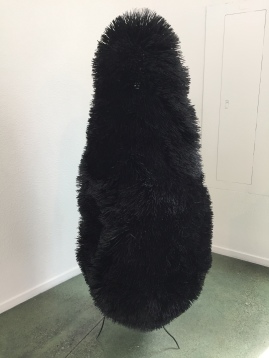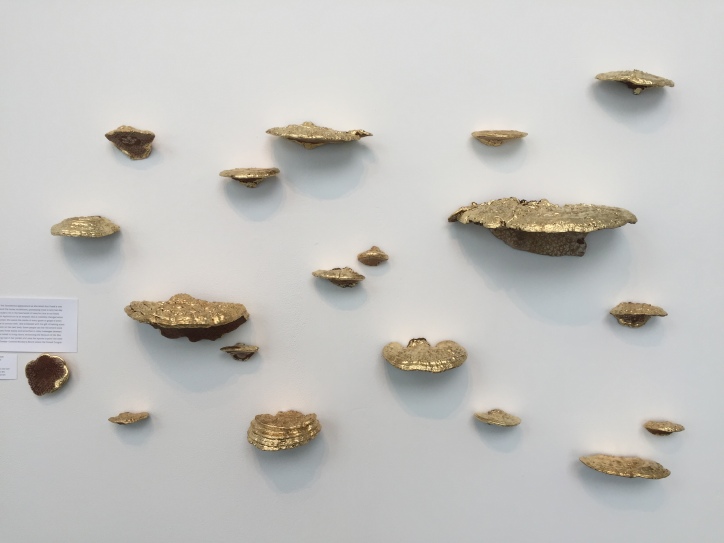Group Exhibition: Arousing Biophilia
curator: Shannon Amidon
Venue: Art Ark Gallery
San Jose, CA
March 2nd – April 27th
Opening Reception – Friday March 2, 2018
First Friday Art walk – Friday April 6, 2018
Closing Reception/Earth Day Celebration – Sunday April 22, 2018
Events at the gallery related to the Exhibition:
Saving the Earth by Changing Art with Danielle Siembieda AKA the Art Inspector
Earth Day Celebration
From the curator
Biophilia – The biophilia hypothesis suggests that humans possess an innate tendency to seek connections with nature and other forms of life.
Arousing Biophilia, a contemporary art exhibition will be held at the Art Ark Gallery from March 2 – April 22 with an opening reception and artist talk Friday March 2 from 6:00pm – 9:00pm. Featuring 12 international artists, the new exhibition seeks to evoke deeper exploration of our natural world, acts of altruism and environmental stewardship by bringing the wonder of nature and the environment back into focus.
As our culture becomes more urbanized, humans have become increasingly disconnected from the forces and elements of nature, a condition that not only impacts our planet but also the health of its inhabitants. Research and studies have shown that being in nature yields measurable mental and physical benefits. “Art has a unique ability to help people envision new and innovative ways to observe nature. It stimulates and raises our environmental awareness by inviting us to consider our surroundings not so much as a backdrop but rather as a vital part of our existence,” says Shannon Amidon, Artist and Exhibit Curator.
Arousing Biophilia brings together the work of 12 talented international artists and in this time of social, environmental and political upheaval offers viewers a moment of contemplation and introspection.
The artists featured in Arousing Biophilia are fascinated with exploring, investigating, and conserving nature. Their artwork explores a variety of topics including life cycles, entomology, ecosystems, botany, organisms, mycology, biodiversity, and the relationship between humans and the environment.
Featured Artists: Shannon Amidon, Liam Blackwell, Cheryl Coon, Michele Guieu, Melinda Hurst Frye, Pantea Karimi, Carrie Lederer, Cynthia O’Brien, Michael Pisano, Estraven Lupino-Smith, Demetra Theofanous, Alexis Williams.
Sponsored in part by Awesome Foundation San Jose
My piece for the exhibition: Plankton Installation
First created in 2016 at Tech Shop San Jose, then in 2017 at San Diego City College Gallery.
Material: recycled cardboard and cardstock, reclaimed wood, tissue paper
Statement for ‘Plankton’
Plankton are the canary in the coal mine of global warming
Understanding how climate change will affect the planet is a key issue worldwide. Ongoing plankton monitoring programs act as sentinels to identify changes in marine ecosystems. Scientists have begun recording alterations in the distribution, abundance, and seasonality of plankton in the Atlantic and Pacific Oceans.
This could have a large impact on species further up the food chain. This is important since these are also the species that we as humans depend upon as sources of protein to feed the world. Food chain disruptions could amplify global displacements and migrations of populations.
Two changes are of particular concern for plankton: rising ocean temperatures and acidification. Since plankton live at the ocean’s surface, they are particularly susceptible to rising ocean temperatures. In more acidic seawater, plankton cannot produce their shells, therefore less carbon sink in the ocean and more is going into the atmosphere.
While there is still much to be learned about plankton, without strong action to reduce emissions of greenhouse gases, climate change will almost certainly result in a long-term decrease in ocean plankton. This is likely to have negative consequences on already pressured global fisheries, and for the populations that depend on them, for the global production of oxygen and the amount of CO2 sequestered at the bottom of the ocean.
More about Plankton
The word plankton is derived from the Greek word “planktos”, which means drifter, since plankton drift at the whim of the ocean’s currents. They have almost limitless distribution across the world’s oceans.
Plankton are the first link in the food chain.
Fish, and mammals depend on plankton for their survival.
Plankton produce 50% of the oxygen on Earth.
Many plankton have an annual bloom, a period of massive reproduction and growth when conditions are right. When it happens, plankton suck up a tremendous amount of the dissolved carbon dioxide near the sea surface. They use sunlight to photosynthesize, converting carbon dioxide (CO2) into organic compounds and producing half the oxygen we breathe. With this action, plankton are as important as the trees and plants in making our planet habitable.
Plankton sequester CO2 at the bottom of the ocean.
When they die, plankton take CO2 with them to the ocean floor, locking it away so it can’t return to the atmosphere and contribute to climate change. It’s one of the only natural processes we know of that can sequester carbon for a long time.
Link to the Exhibition on Art Ark Gallery website here.
Video by Shannon Amidon
Time lapse video by Shannon Amidon






























